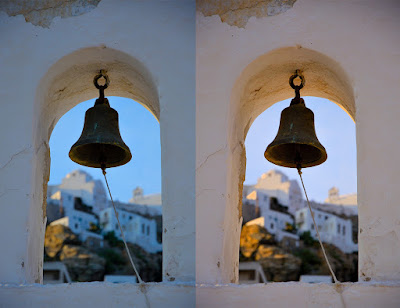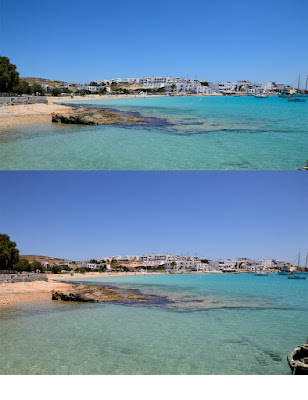First things first: About the only way you can get eye damage while taking photos is if you look (long enough) at the sun through the viewfinder. Not really likely. The title is used, surprise-surprise, metaphorically.
In this context, "avoiding blindness" means to avoid becoming accustomed to an undesired situation. Repeating an error long enough, and it no longer feels like an error. Our eyes (there is a reason I picked this metaphor) have an admirable ability to getting used to the way a scene (or photos) look like, assuming that it is the proper one and there is nothing wrong with it.
| White balance is a critical element in getting the affect you intended |
Crucially, sometimes we might have a hunch something's not right, but we can't pinpoint the source of our displeasure. How many times have you been looking at your photos thinking "why on earth doesn't this look right?", being unable to find the reason?
I decided to write a series of articles focusing on technical aspects (part 1 is about auto white balance) that can often lead to this kind of blindness, that is, our inability to understand something's not right with our photos - or, if we do, we're unable to pinpoint its source.
As often is the case, these lessons are learned after you face them in the field. You won't discover them if you stay in front of your computer screen, looking at diagrams and ISO noise at 100%. You must get out, take photos, see the world. Better still, compare your photos to someone else's, see the differences. This is how it happened to me, during my most recent trip.
I was shooting using my D3200 and the 18-105 - which, if you recall, is the only combo I'm using these days - while my wife shot with her entry-level Canon 450d and the 18-55mm lens. I shoot .raw, so that I can fix things later (and mostly the white balance) and that is one reason I leave the white balance on auto.
| Exposure is critical, but white balance is, too. |
As I began seeing the photos taken by my wife, however, I also began noticing something: they had much better colors. After seeing the pattern repeating itself (it's easy to dismiss one or two as a chance happening), I realized I needed to find the reason I liked her out-of-the-camera pics better than my own. I realized that I particularly liked the color of the sand in her photos, which led me to realize there was something wrong with my white balance.
My photos were too cold - the auto white balance of the Nikon D3200 is apparently much cooler than the auto white balance of the Canon 450d. I went into the camera settings and cranked up the fine-tuning all the way to the warmest setting. Then I went back shooting.
Voila, I began liking my photos significantly better than before. The color was brighter, somehow not only more attractive but also more accurate. I was fascinated by how blinded I had been earlier, believing that the color was then accurate, while it hadn't been.
Did the photos I showed you before seem fine, color-accurate, pleasing? Well, that's what I thought too (sort of), until I realized I was blinded in regard to the auto white balance my Nikon D3200 gave me.
 |
| Left,the photo above. This is what I was getting before I fine-tuned my auto white balance |
 |
| Same situation (top is before, bottom is after) |
So yeah, I tricked you a bit - I presented the earlier versions by themselves further up, trying to fool you into believing they looked fine. I did this not out of spite, but to show you how easy it is to be blinded. If you did think they looked too cold, bravo, you have very good eyes and a keen photographic sense.

No comments:
Post a Comment